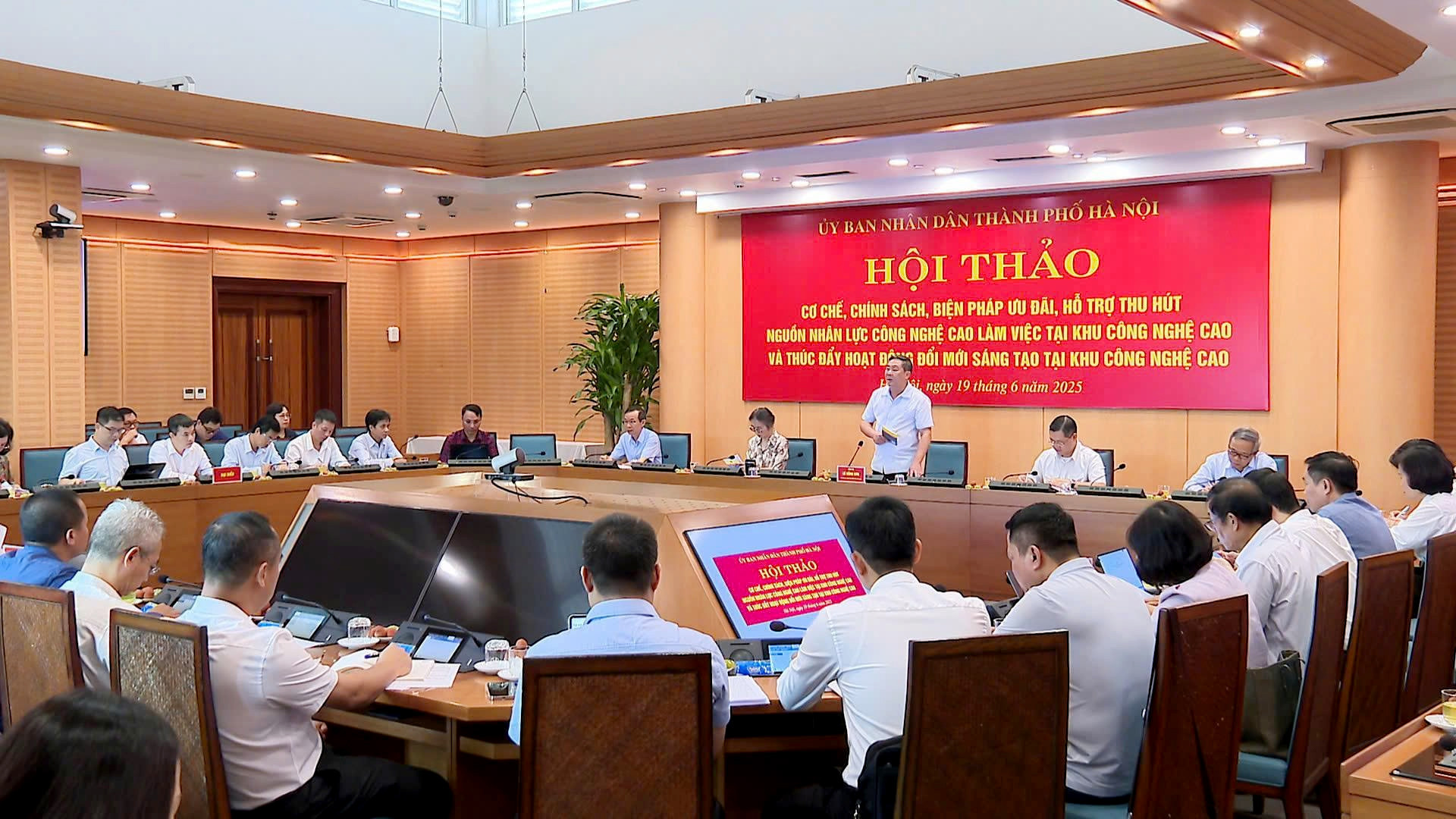
On June 19, the Hanoi People’s Committee organized a seminar to discuss preferential policies and support measures to attract high-tech human resources and promote innovation activities in Hoa Lac High-Tech Park.
One of the key recommendations was proposed by Chinh, who said Hanoi should pioneer cooperation among three parties—the state, scientists and businesses—inside Hoa Lac High-Tech Park.
This would create a substantive innovation ecosystem, with businesses put at the center of creativity, scientists driving knowledge advancement, and the state playing the role of policy enabler, providing direction and leadership.
If the tripartite cooperation model is effective, it will serve as a firm foundation for Hanoi to retain talent and create new growth momentum for the entire region.
From this model, Chinh proposed that Hanoi establish an Innovation Center at Hoa Lac, operating under a public investment–private governance model.
He said the center could operate as an SPV—a specialized legal entity functioning with a mechanism that combines public assets, private governance, and societal resources.
This entity would serve as a strategic hub to connect resources for research and development, talent training, technology transfer, incubator formation, startup activities, operation of a technology exchange platform, and, particularly, an open space to promote “Make in Vietnam” products from ideation to commercialization.
CMC Group affirmed its readiness to collaborate with Hanoi University of Science and Technology and the Hoa Lac High-Tech Park Management Board to implement the pilot model, demonstrating its feasibility and effectiveness.
High-tech park policy
Chinh noted that for innovation to truly flourish, Hanoi must establish a robust technological infrastructure, i.e., a modern, shareable digital infrastructure.
He said that many small technology enterprises and startups at Hoa Lac face challenges in independently investing in server systems, data storage, high-bandwidth connectivity, or high-performance computing, as only large corporations can afford the extremely high costs.
If the city develops a shared digital infrastructure ecosystem, scalable and accessible to businesses, research institutes, and universities, it would save societal resources but also enable faster technology testing, deployment, and product development.
The CMC Chair pointed out a longstanding bottleneck in technology development: administrative procedures and land-use mechanisms that lack flexibility.
He said the development of private universities, research institutes, and R&D centers at HoaLac faces numerous barriers due to lengthy licensing processes, complex procedures, and a lack of clear incentives.
He proposed that Hanoi issue specific mechanisms tailored to the high-tech park, allowing flexible land allocation, streamlined procedures, and full digitization of licensing and operational processes.
This would not only save time for businesses but also show an image of a dynamic Hanoi, ready to transform in the technology era.
Regarding the human resources development, Chinh emphasized that current policies are general and not detailed enough.
Hanoi needs mechanisms that truly attract specific groups of experts. For instance, for leading experts, there should be incentives tied to output results and product-based salaries. For overseas Vietnamese or international experts, there should be clear policies on visas, residency, long-term property ownership rights, personal income tax exemptions, and family support.
For young talents, there should be mechanisms for connecting startups with investors and expert protection programs.
Most importantly, these policies must be clear, transparent, easily accessible, and effectively communicated in the international community.
An innovation ecosystem within reach
“Hanoi can absolutely lead the country in developing an innovation ecosystem. However, to achieve this, there must be a determination to innovate policy thinking, dare to act differently, and expand cooperation with the private technology business sector,” Chinh concluded.
Hanoi People’s Committee Standing Vice Chair Le Hong Son praised CMC’s contributions, noting that the city is urgently finalizing resolutions to concretize the new Capital City Law.
These will include clear, substantial, and breakthrough incentive policies for technology experts, innovative founders, and R&D (reserach and development) organizations, aiming to achieve the goal of double-digit GRDP (Gross Regional Domestic Product) growth for the capital from 2026.
“Hanoi is ready to be a testing ground for new models. And the city needs the companionship of visionary and innovative enterprises,” Son said.
Thai Khang